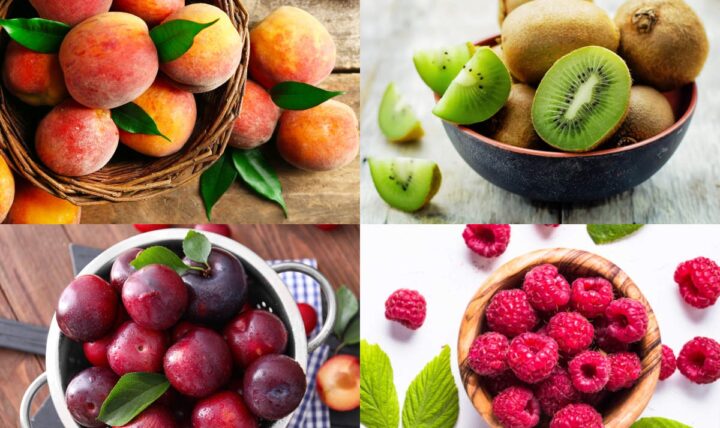
Low-sugar fruit: You should eat more of these types
If you want to eat healthily and with as little sugar as possible, you should also pay close attention to fruit. Many fruits contain many more calories than you might think. An overview.
It’s no secret that fruit is an integral part of a balanced diet. After all, fruit offers a lot of healthy fiber, secondary plant substances, vitamins and minerals – but often also a lot of sugar in the form of fructose, glucose and sucrose. We list which varieties contain particularly little and particularly high amounts of sugar.
Info: The information relates to the total sugar content (sum of glucose, fructose and sucrose) per 100 grams.
Avocado – 1.4 grams of sugar
Yes, indeed: the avocado is a berry and is therefore botanically one of the fruit varieties. Their sweetness comes only from glucose, not from fructose (fruit sugar). This makes the fruit extremely low in sugar and healthy.
Raspberry – 4.8 grams of sugar
Like many types of berries, the raspberry is far ahead when it comes to low sugar content: only 4.8 grams are contained in 100 grams of fresh raspberries. They are also low in calories and high in fiber.
Strawberry – 5.5 grams of sugar
With a sugar content of 5.5 grams per 100 grams, strawberries are among the lowest-sugar types of fruit. They also contain far more vitamin C than, for example, oranges.
Apricot – 7.7 grams of sugar
Apricots score with a low sugar content: they contain only 7.7 grams per 100 grams.
Plum – 7.8 grams of sugar
At 7.8 grams, the plum is also one of the low-sugar types of fruit.
Orange – 8.3 grams of sugar
Oranges are also among the types of fruit that contain less sugar. In addition to the vitamin folic acid and the mineral potassium, the fruit also offers a high amount of vitamin C.
Watermelon – 8.3 grams of sugar
The watermelon is a popular refreshment, especially in summer because of its high water content. In addition to vitamin B5 and vitamin C, it contains 8.3 grams of sugar.
Kiwi – 9.1 grams of sugar
Kiwis are real vitamin C bombs: just one fruit can cover a third of the daily requirement. In addition, there is a low sugar content.
Pear – 10.2 grams of sugar
The pear is easy to digest, contains little fruit acid and comparatively little sugar.
Apple – 10.3 grams of sugar
Finally, the top 10 low-sugar fruits also include apples, which have 10.3 grams of sugar.
Info: According to the German Society for Nutrition (DGE), the more fruit and vegetables you eat, the lower the risk not only of certain cancers, but also of obesity, high blood pressure and coronary heart disease.
This fruit has the highest sugar content
Many types of fruit contain significantly more fructose. Bananas and grapes, for example, taste very sweet – it is hardly surprising that they are also high in sugar. These fruits have the highest sugar content:
Banana (17.3 grams of sugar)
Pomegranate (16.1 grams of sugar)
Grapes (15.1 grams of sugar)
Sweet cherry (13.7 grams of sugar)
Mango (12.5 grams of sugar)
Pineapple (12.4 grams of sugar)
By the way: The DGE recommends two servings of fruit (about 250 grams) per day as a guideline. A portion is what fits in your hand. Choose the low-sugar varieties. On the other hand, you should treat very sweet fruit as a treat.
Categories: General
